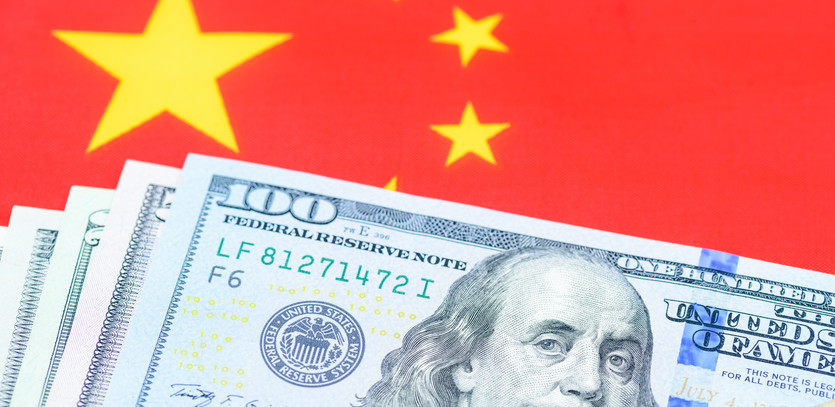Decoding China's Substantial Influence on the U.S. Dollar
At the crossroads of global finance, China's economic strategy plays a pivotal role in shaping the value of the U.S. dollar. By loosely pegging the value of its currency, the renminbi, to the dollar, China directly impacts the standing of the U.S. dollar on the global stage. China's central bank adopts a nuanced and bespoke approach, employing a modified version of the conventional fixed exchange rate system. This method differs notably from the widely accepted floating exchange rate system used by the United States and several other countries.
The People's Bank of China: The Watchful Guardian of the Yuan
Serving as the epicenter of China's currency management, The People's Bank of China shoulders the responsibility of overseeing the yuan's value. The bank maintains a steady fix of the yuan to a curated basket of currencies, representative of its trading partners. The basket is heavily weighted towards the dollar, mirroring the significant trade relationship between China and the United States. This managed approach ensures the yuan's value oscillates within a 2% range against the selected basket of currencies.
On a pivotal day in August 2015, the central bank reshaped its pegging strategy. They adopted a "reference rate" policy that equates to the yuan's closing value from the previous day. This bold step marked a significant shift towards market-driven currency value, accepting the potential for greater market volatility. The move bore fruit when the International Monetary Fund (IMF) integrated the renminbi into its Special Drawing Rights basket.
Scrutinizing China's Strategy: Pegging the Yuan to the Dollar
China's practice of managing its currency value is a calculated maneuver designed to control its export prices effectively. The primary objective behind this strategy is to ensure that Chinese exports remain economically attractive, costing less than products from other nations when sold in the U.S. market. This economic goal is common among countries, but China's prowess and success in managing it are unparalleled.
Unpacking China's Currency Management Power
The strength of China's currency management strategy predominantly arises from its sizable exports to America. The leading sectors contributing to this export power include:
- Electrical machinery
- General machinery
- Furniture and bedding
Moreover, American companies frequently engage with Chinese factories for cost-effective assembly of raw materials. Once the finished goods are shipped back to the United States, they are counted as imports, leading to a U.S. trade deficit with China that ironically benefits American companies.
During such export transactions, Chinese firms usually receive payments in dollars. These dollars are then deposited into local banks in exchange for yuan, which are used to pay local employees and suppliers. These local banks, in turn, pass on the dollars to China's central bank, which regularly adjusts these reserves by engaging in buying or selling activities on foreign currency markets. The accumulation of dollars by the central bank exerts upward pressure on the dollar and downward pressure on the yuan.
Importantly, the People's Bank of China doesn't merely hold onto these dollar reserves. Instead, it utilizes these dollars to purchase U.S. Treasuries, which serve as safe-haven assets and offer a slight return over cash.
The Dynamic Value of the Yuan
The delicate dance between market forces and China's diligent currency management efforts can lead to significant fluctuations in the yuan's value. For instance, China's 2015 modification to its exchange rate policy led to a dip in the yuan's value. To rectify this, the central bank used its vast dollar reserves to buy yuan from Chinese banks, thereby boosting the currency's value and simultaneously lowering the dollar's value.
2016 saw further relaxation of the yuan's control, contributing to the Dow's substantial fall and a 2.3% drop in the S&P 500. By 2017, the yuan had plummeted to its lowest point since 2008. However, this wasn't a sign of a currency war with the U.S.; instead, it was a compensatory measure against the rising dollar. The yuan, pegged to the dollar, followed its surge, making China's exports more costly than those from countries not tied to the dollar. To remain competitive, China had to reduce its exchange rate.
The Reverberations of China's Economic Reforms on the Dollar
China's economy doesn't just influence the dollar's value through direct interventions; it also impacts the dollar indirectly. For example, the dollar's strengthening in 2014 and 2015 was partially driven by China's economic slowdown and a significant crash in its stock market.
The Balancing Act: China's Inflation Dilemma
China's leadership grapples with the challenging task of moderating economic growth without triggering inflation. Over-investment into state-run companies and banks can lead to the pumping of funds into unprofitable ventures, necessitating economic reforms.
However, a drastic reduction in growth could induce panic and potential financial crises due to high levels of corporate debt. In response to these risks, China's wealthiest citizens are investing in U.S. dollars and Treasuries as a form of risk mitigation.
The Ripple Effects of China's Slowing Growth
China's slowing growth is also a concern for emerging markets that heavily rely on exports to China. As China's growth diminishes, it will negatively impact these trade partners, reducing foreign direct investment and weakening their currencies. The resulting strengthening of the dollar could create a profitable situation for forex traders who can capitalize on this trend.
-
Why is China's currency manipulation problematic for the U.S.?
China's currency manipulation can lead to cheaper exports, providing China with an unfair advantage in global trade. This practice was a primary contributor to the U.S. trade deficit with China.
-
What is the Chinese currency?
The official name of the Chinese currency is "renminbi," while transactions are typically measured in "yuan." While these terms are often used interchangeably, "renminbi" refers to the currency itself, and "yuan" is a unit of that currency.





